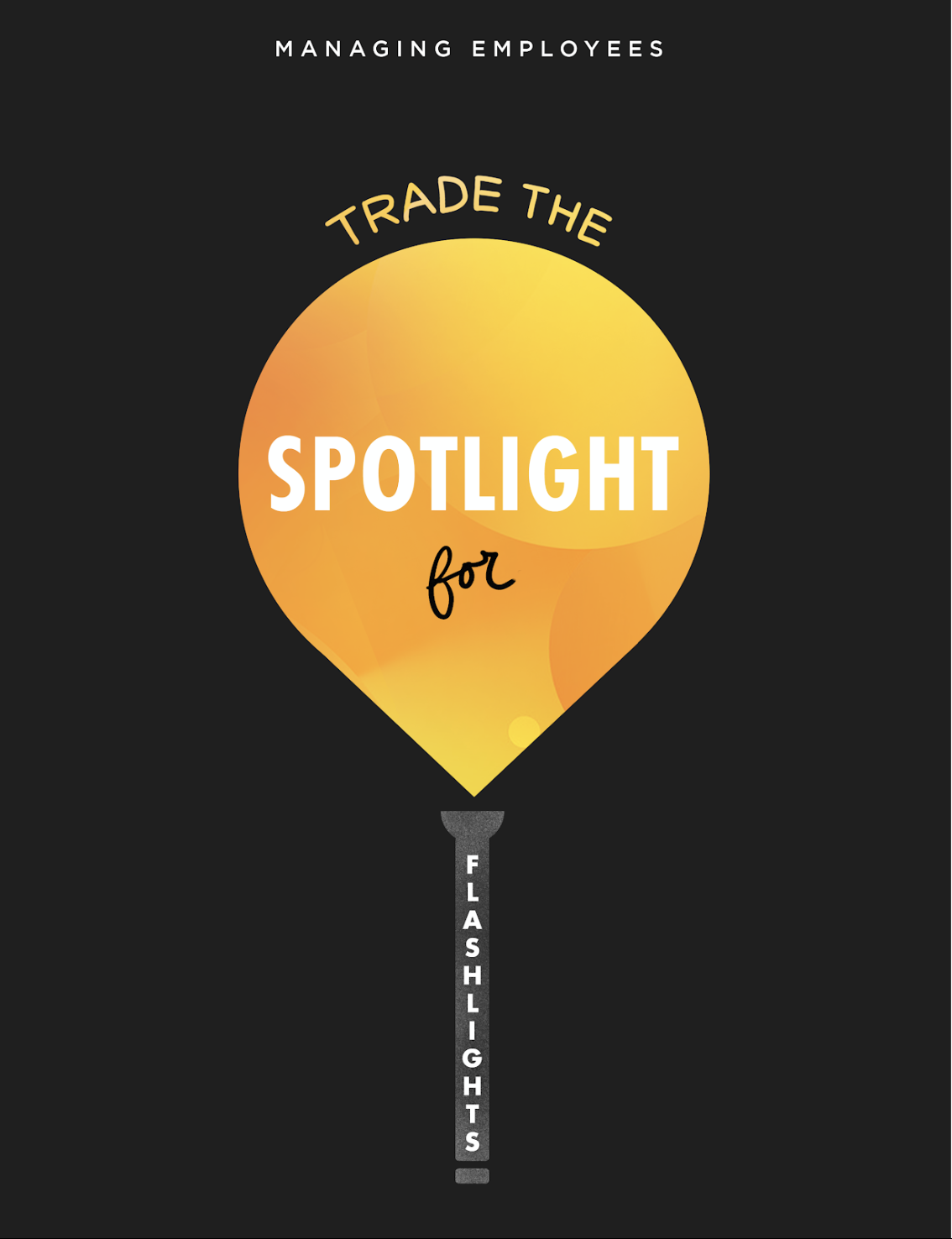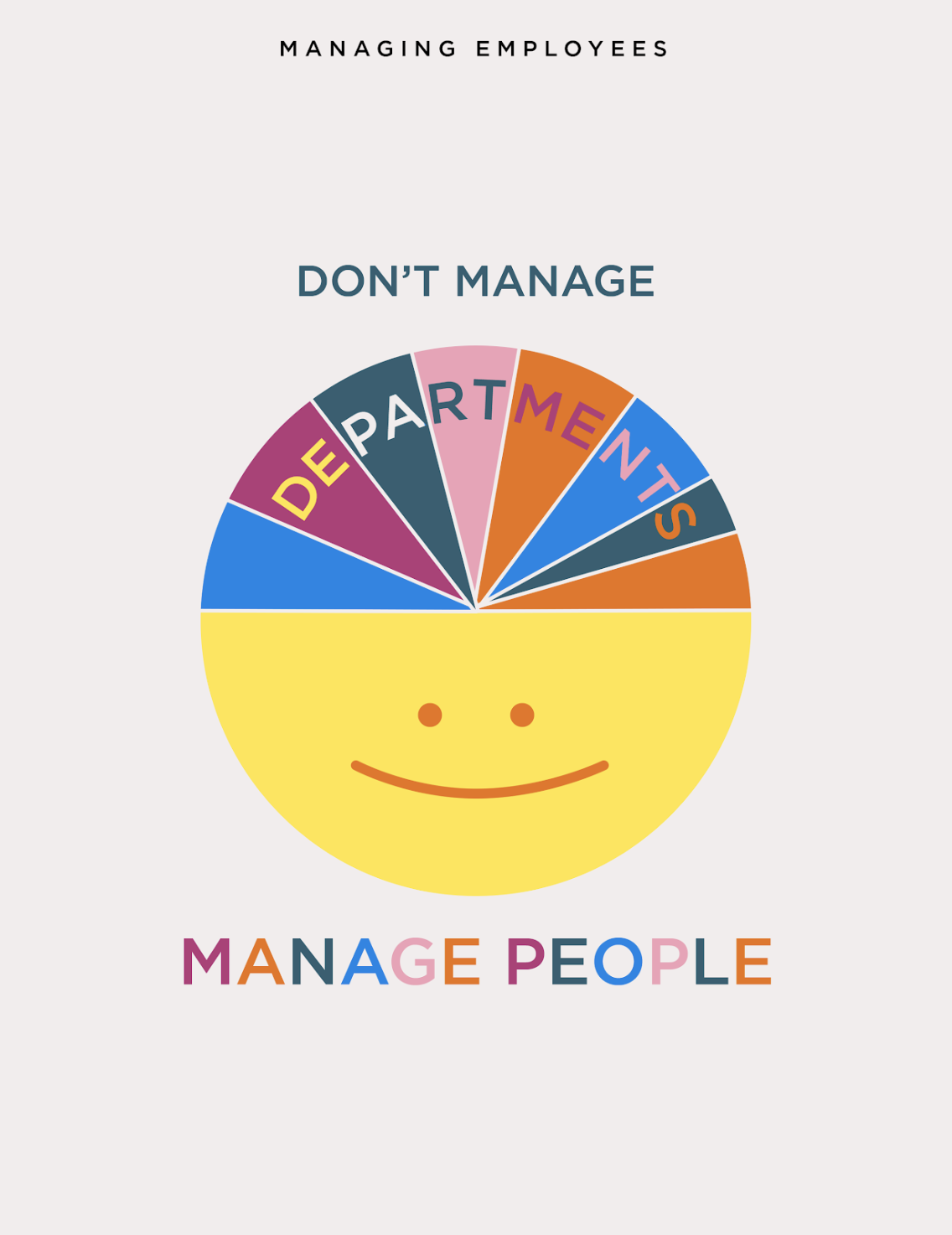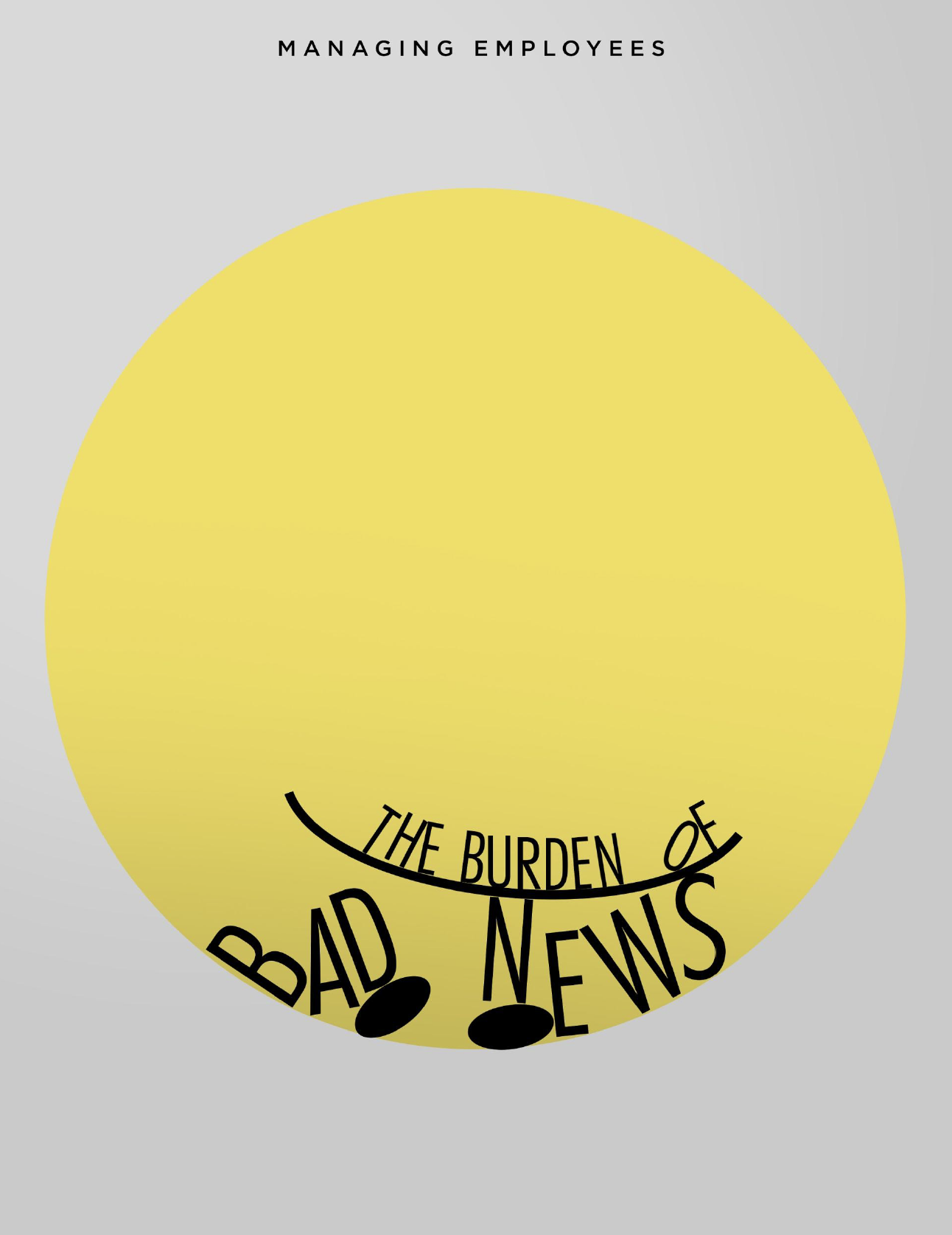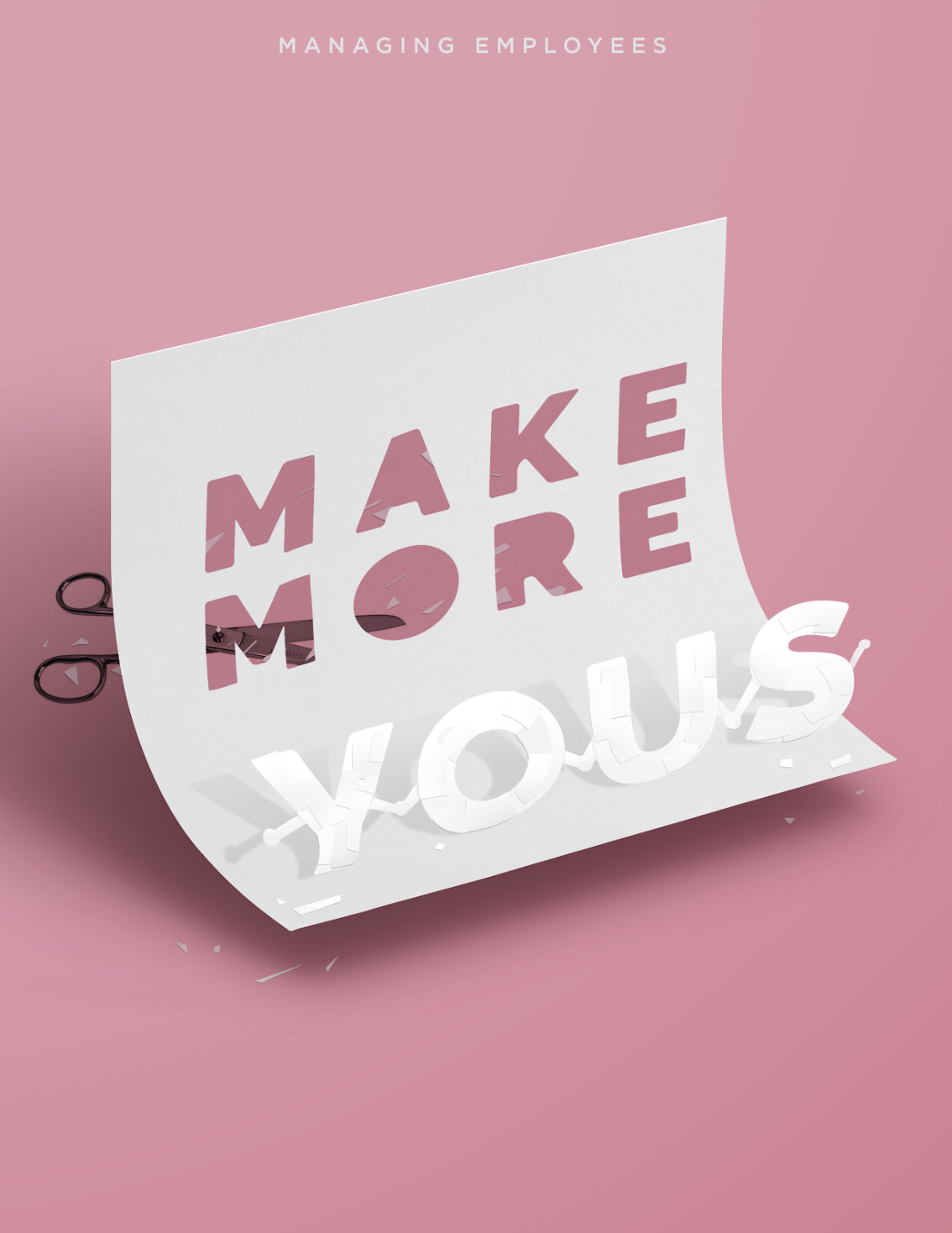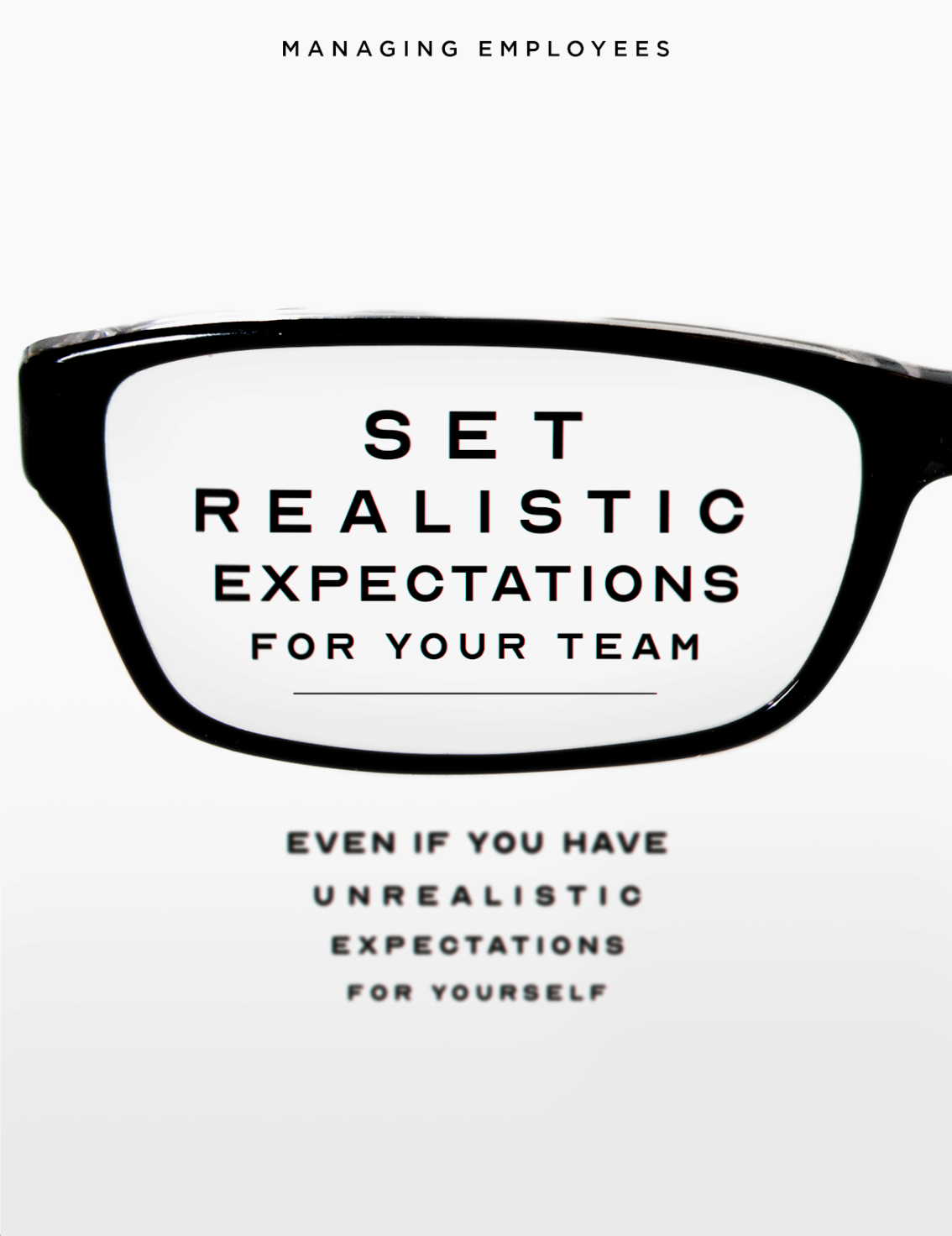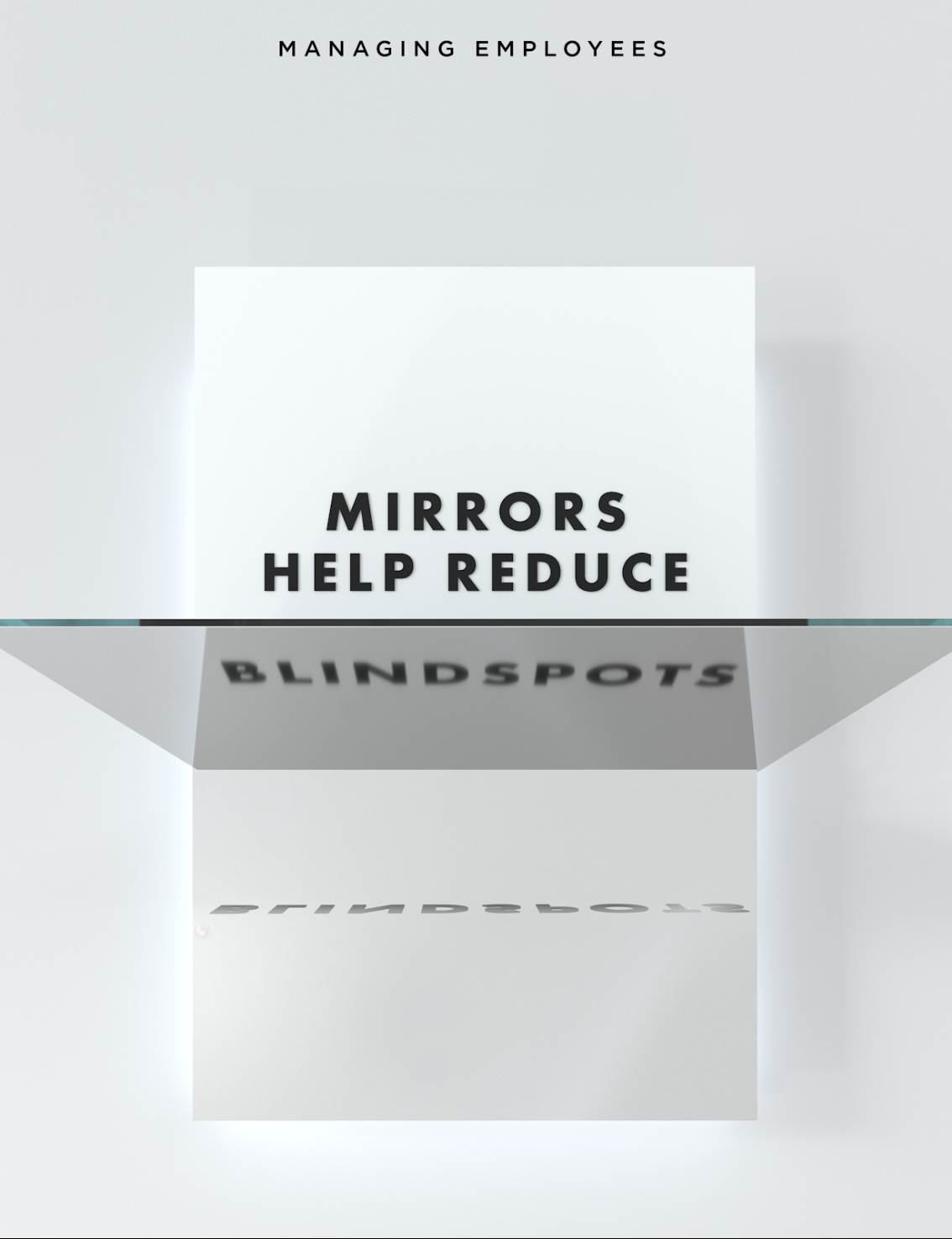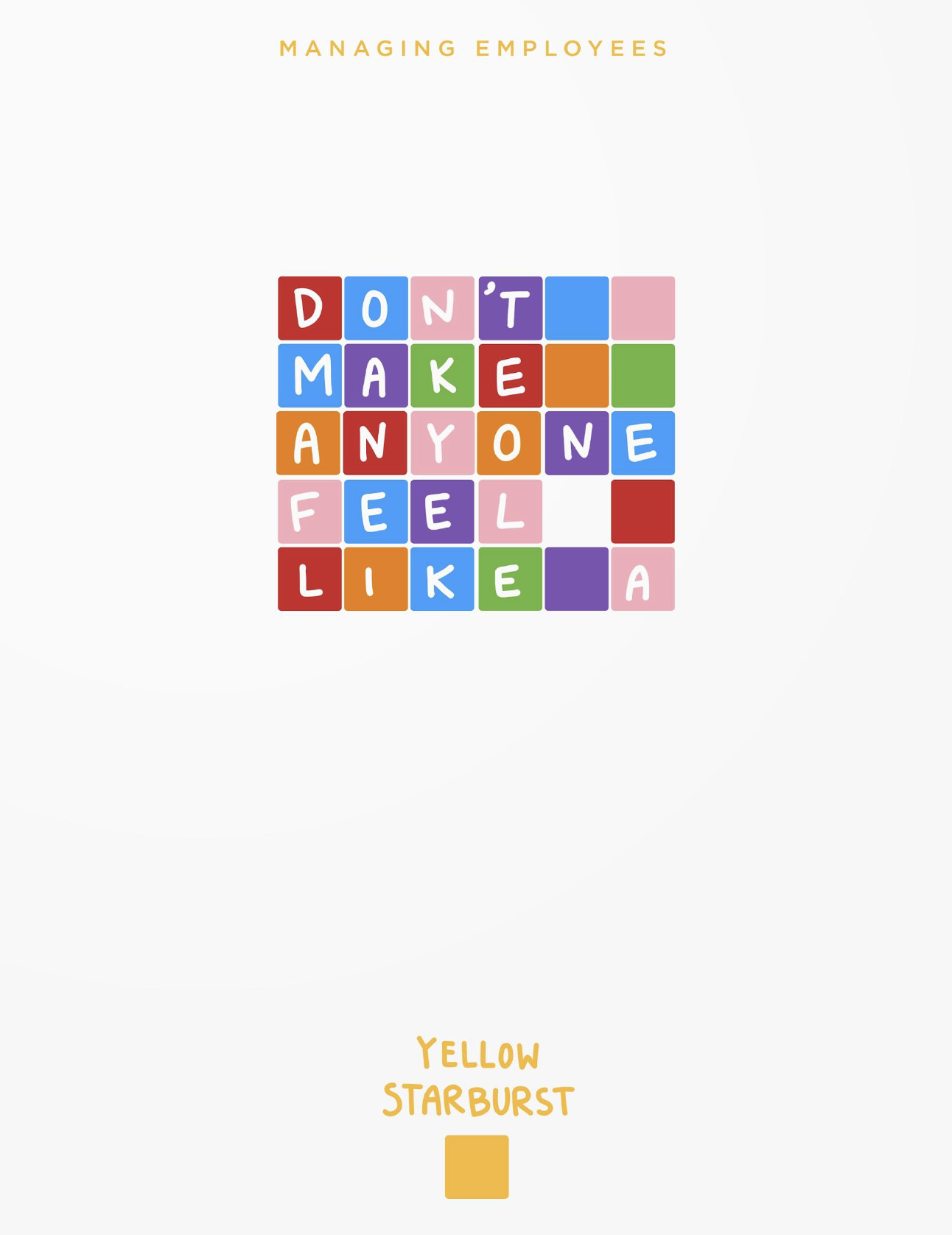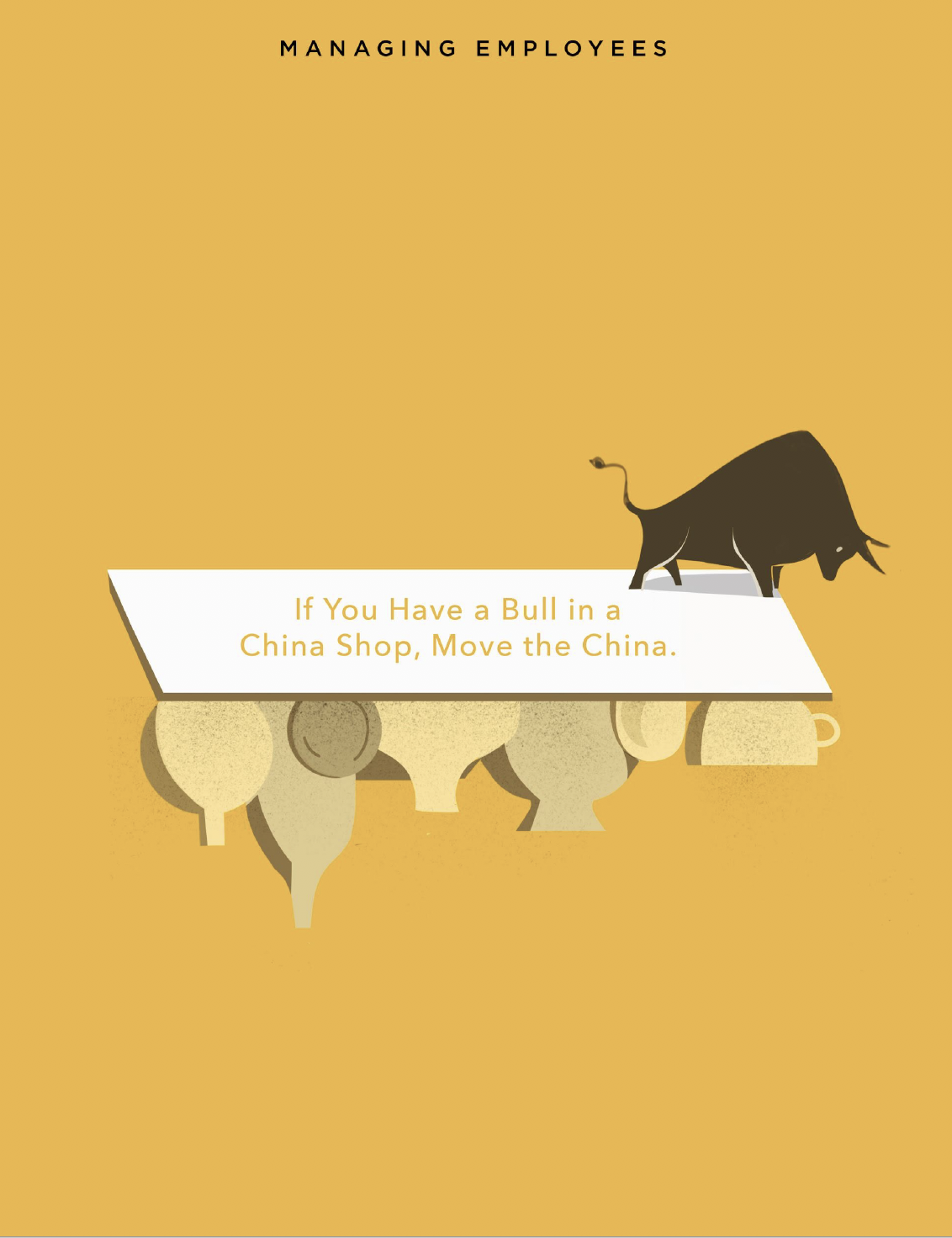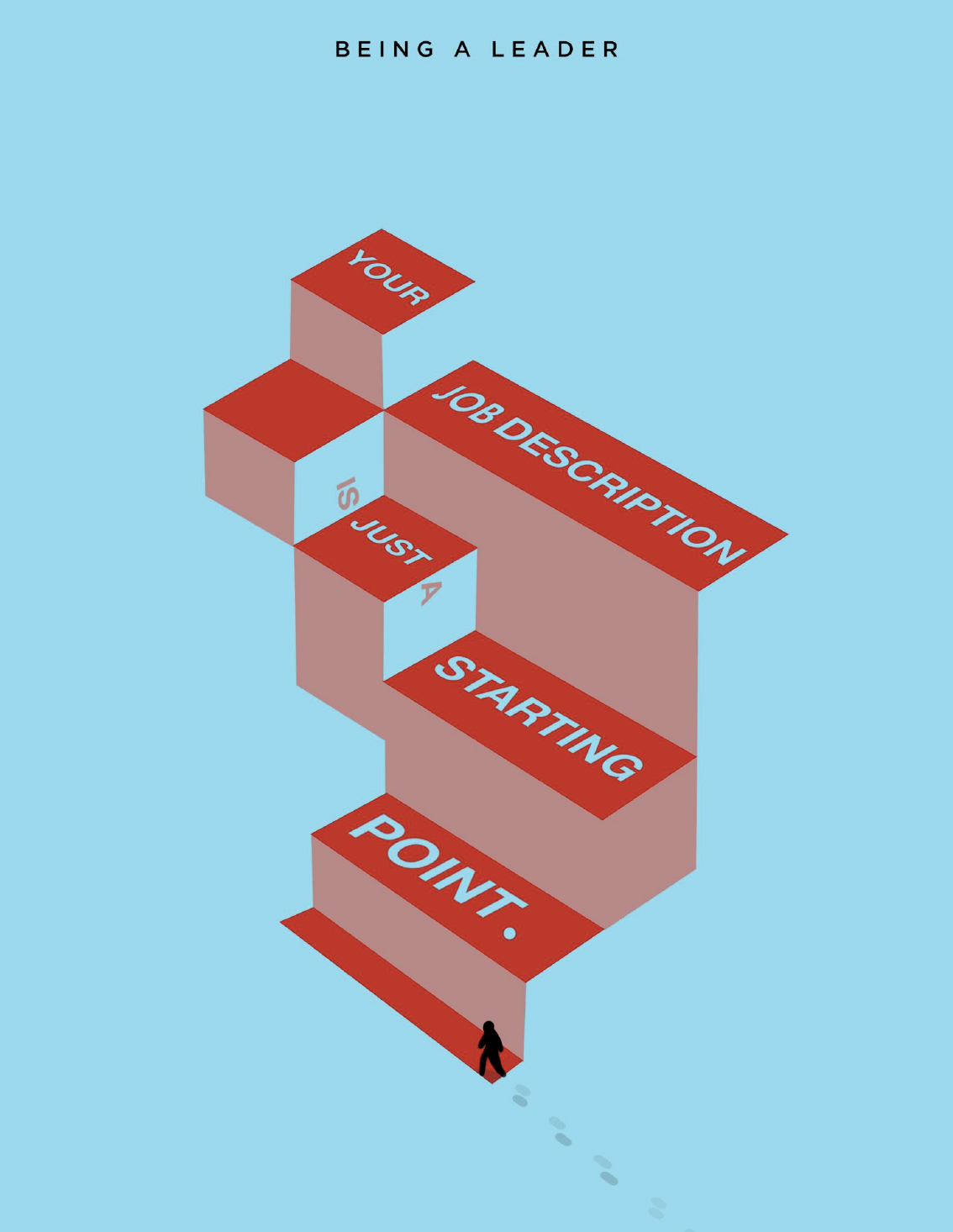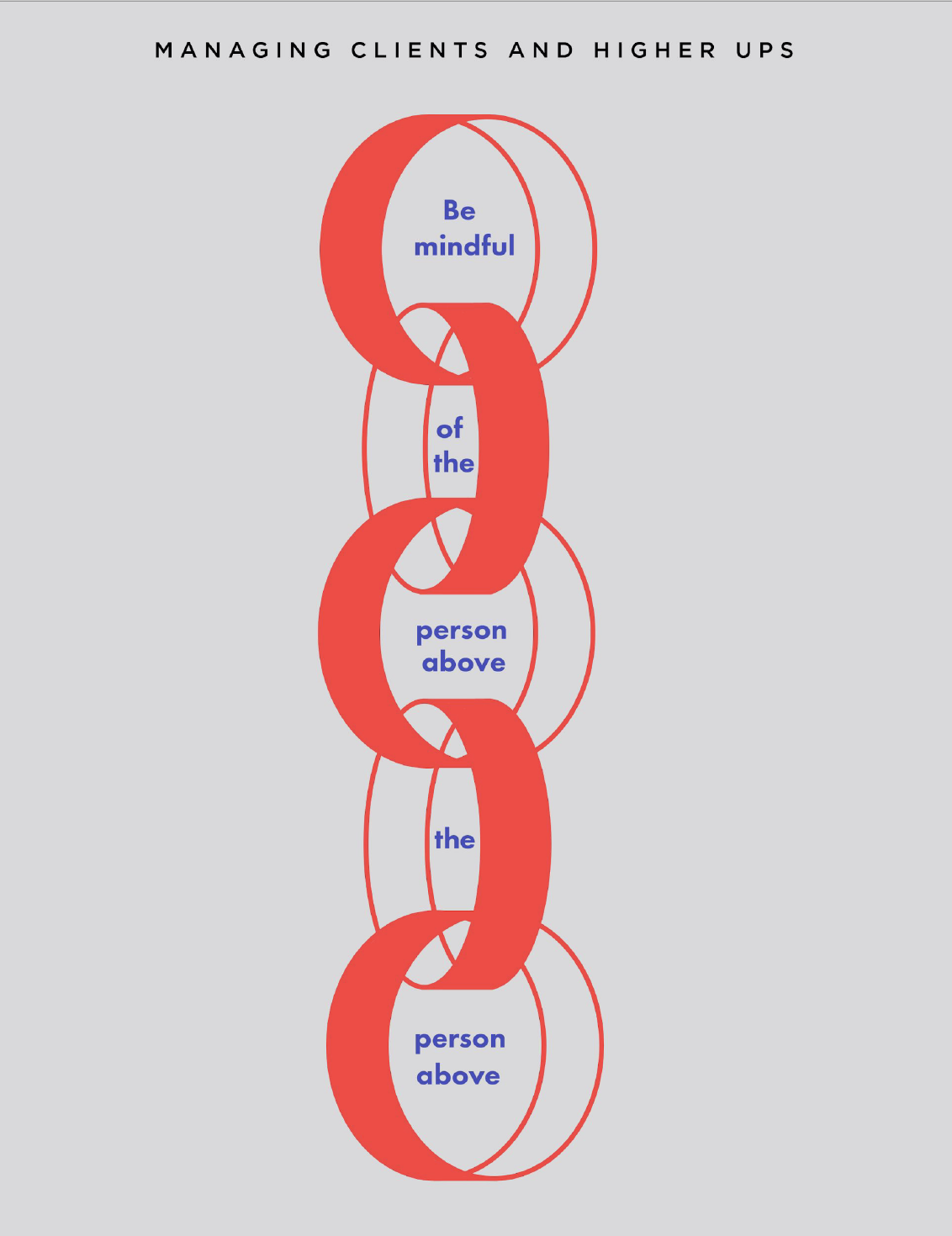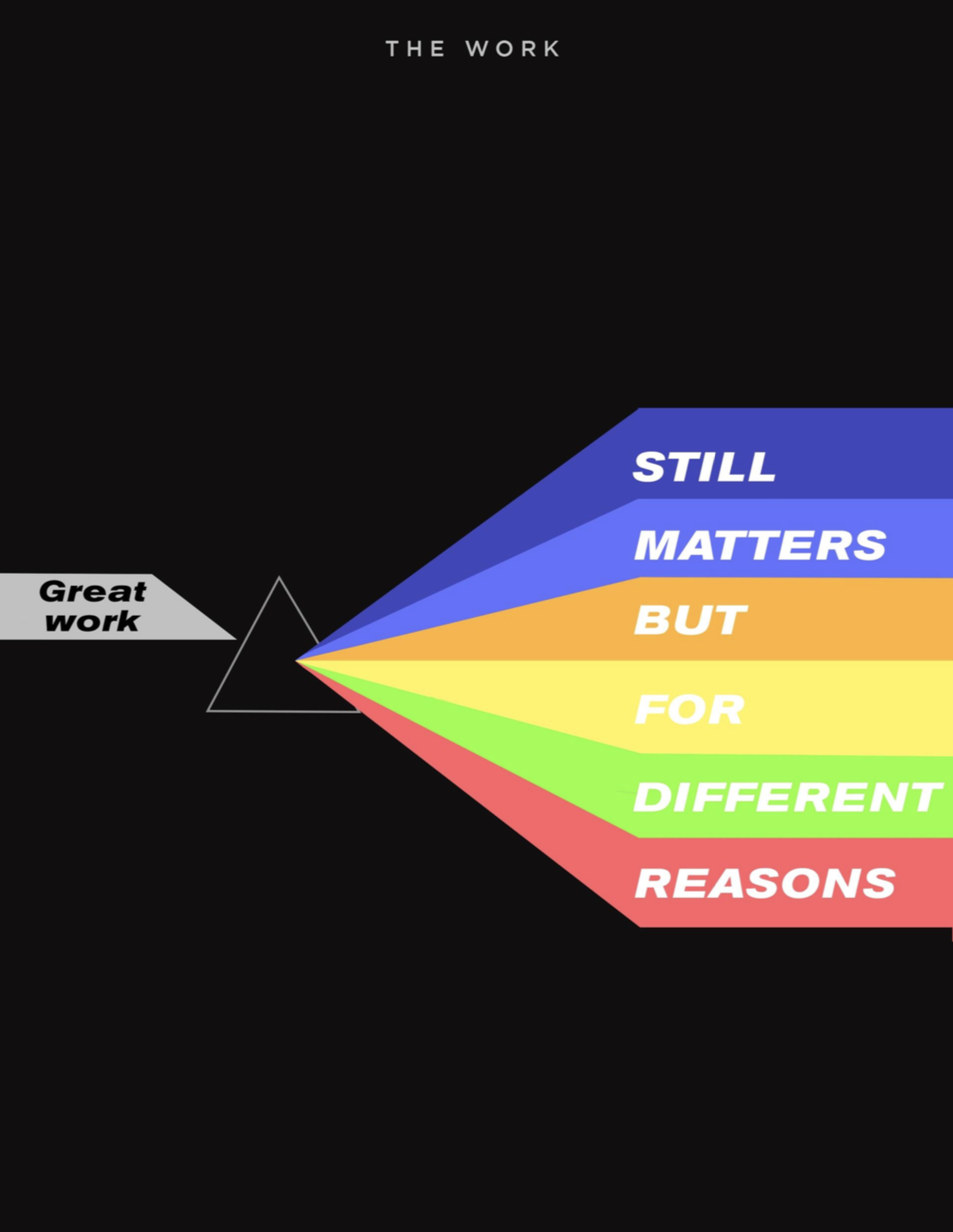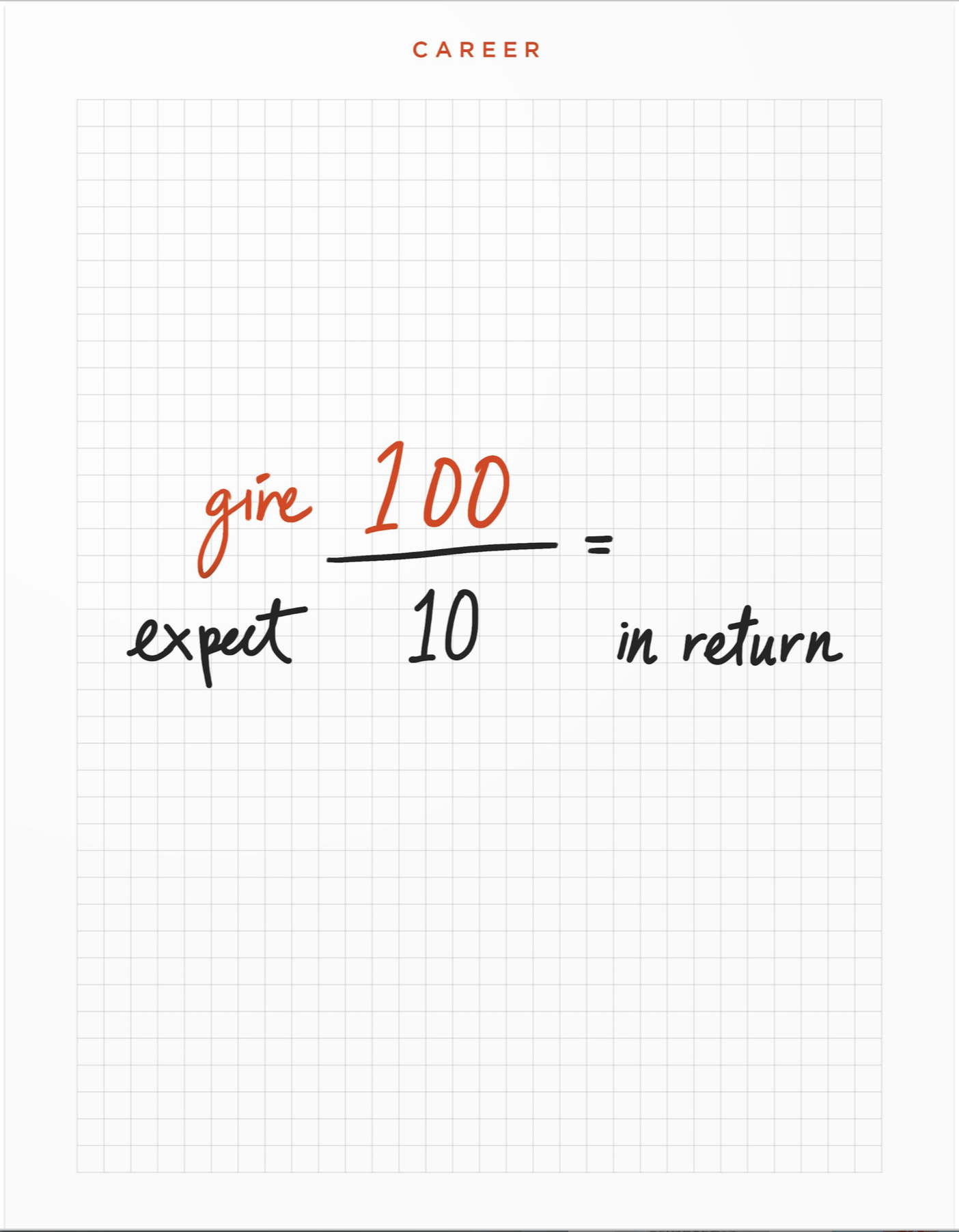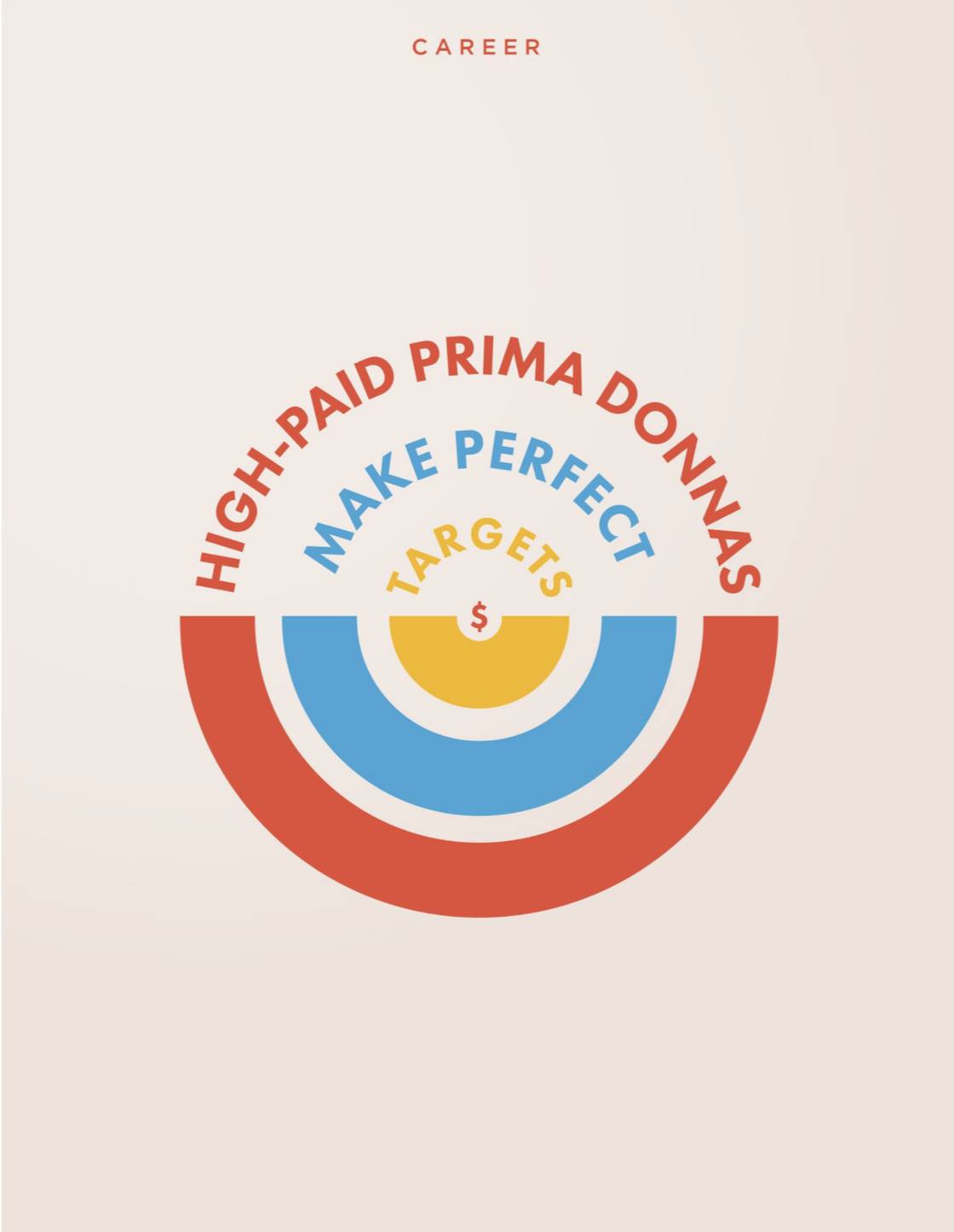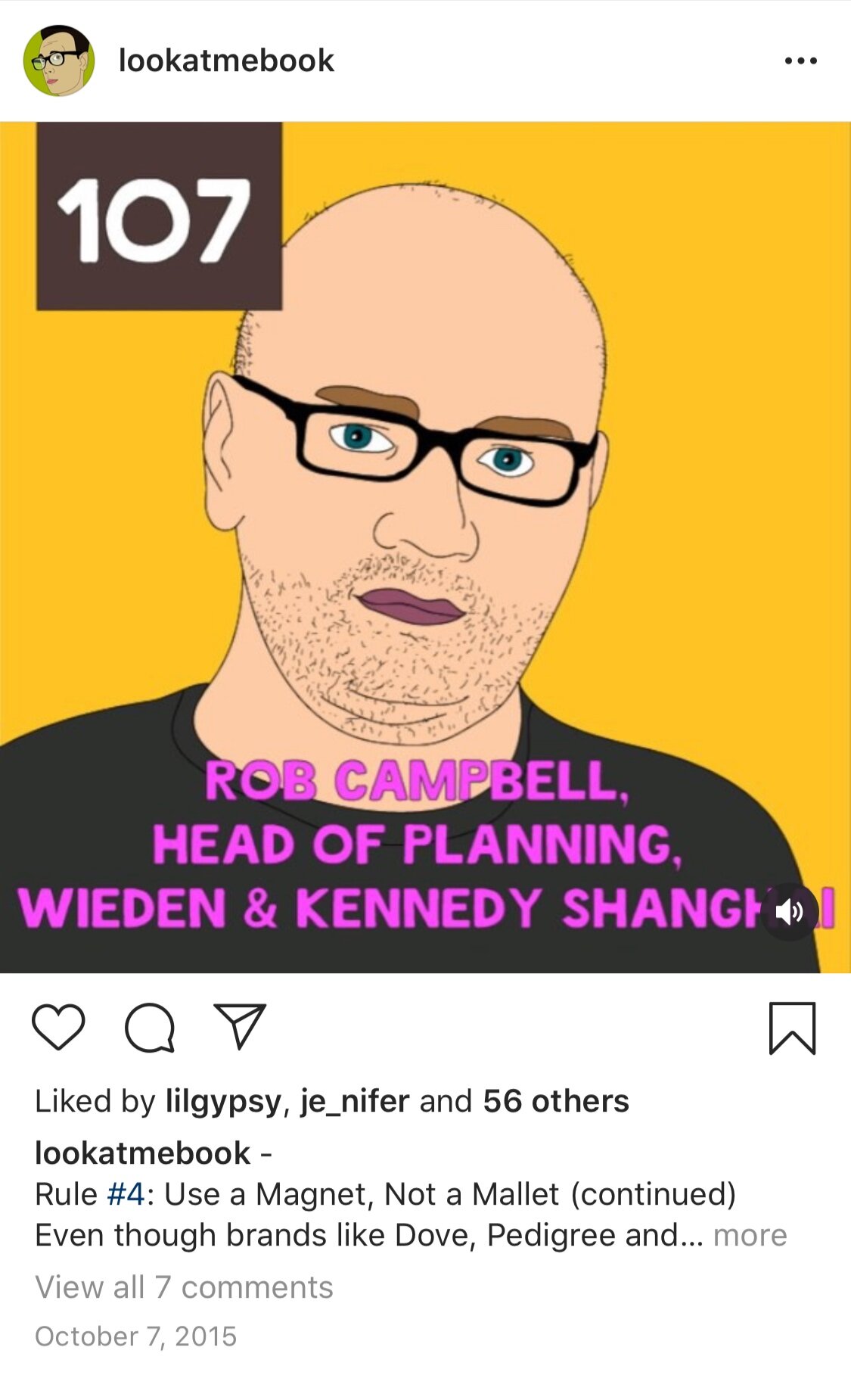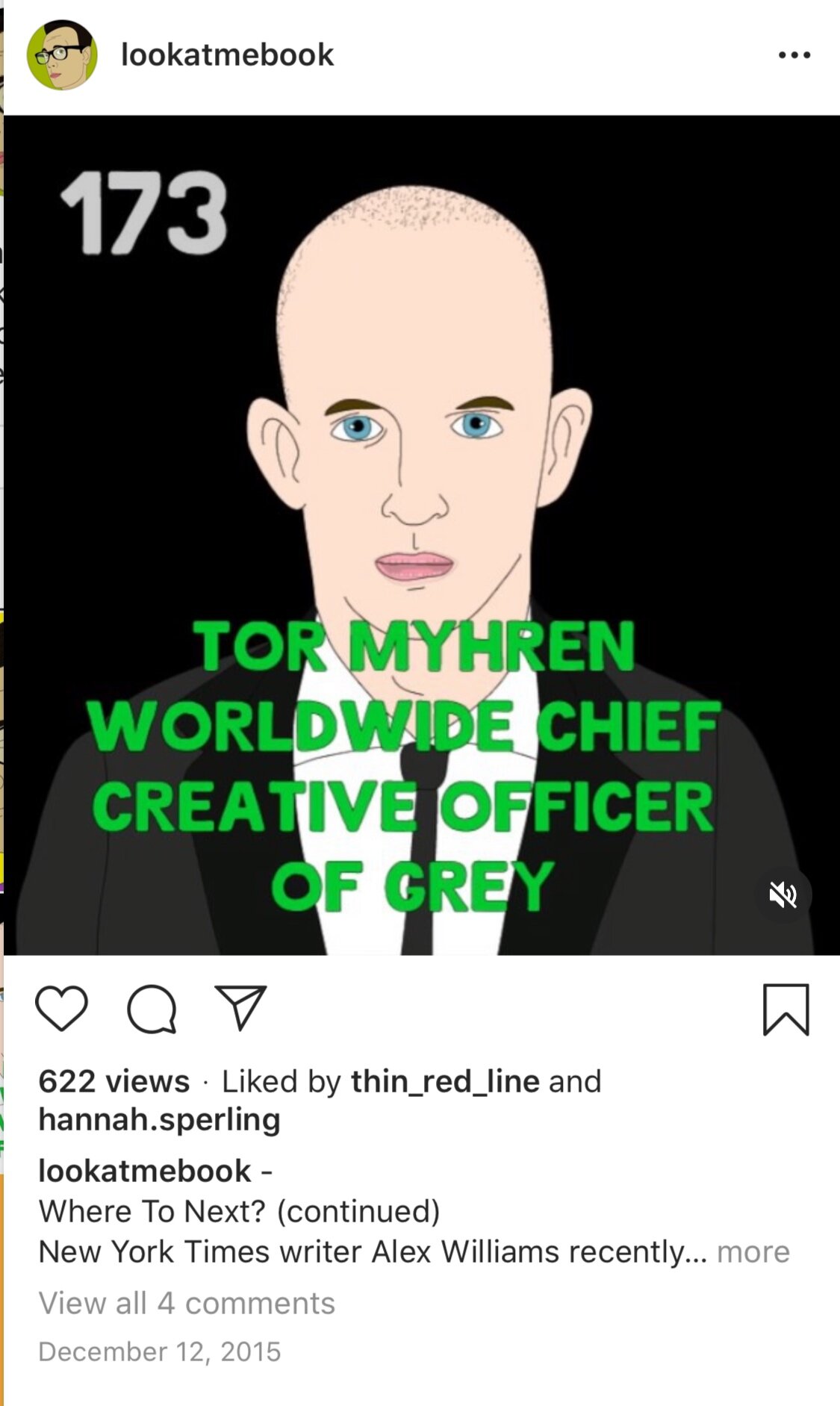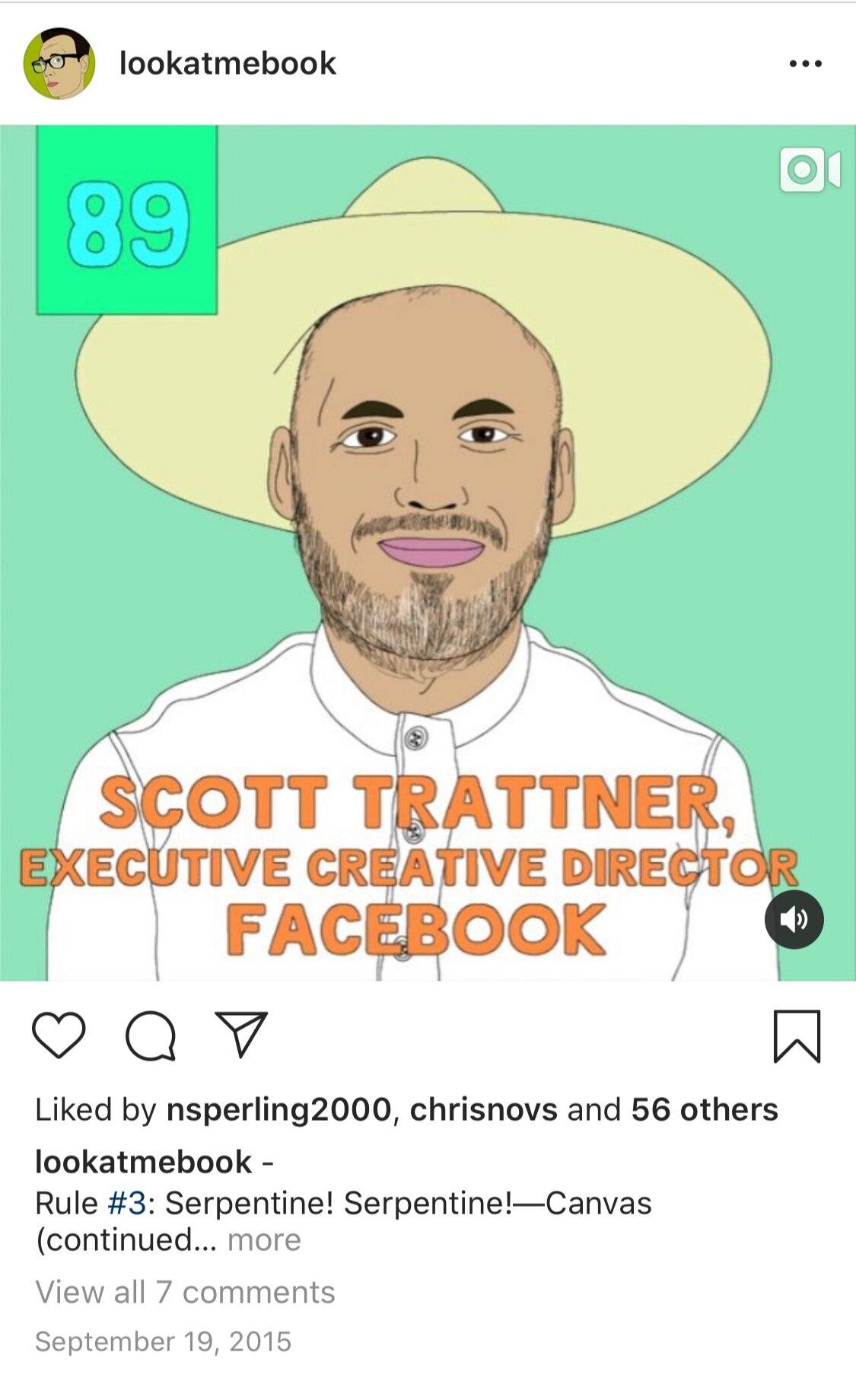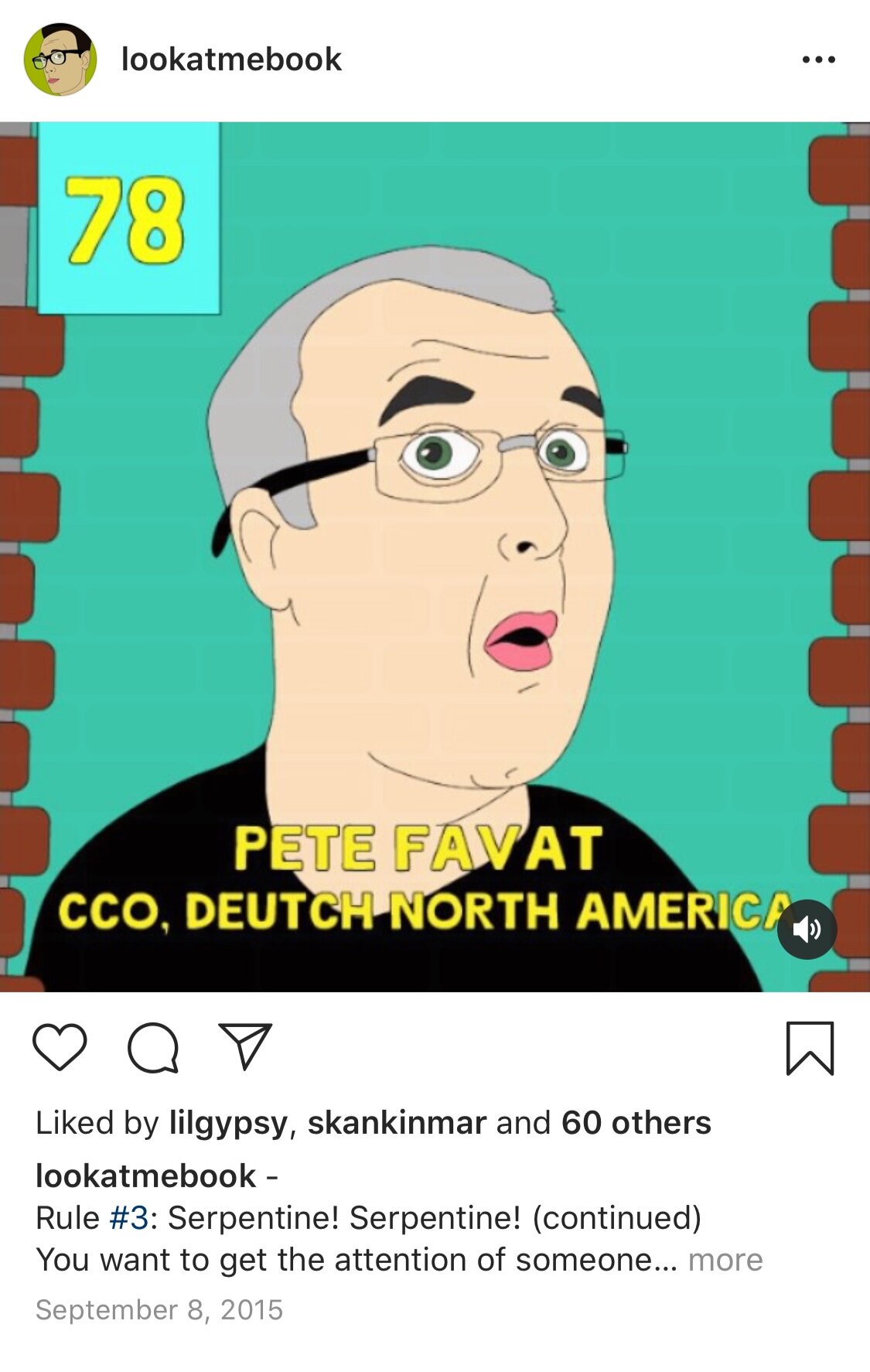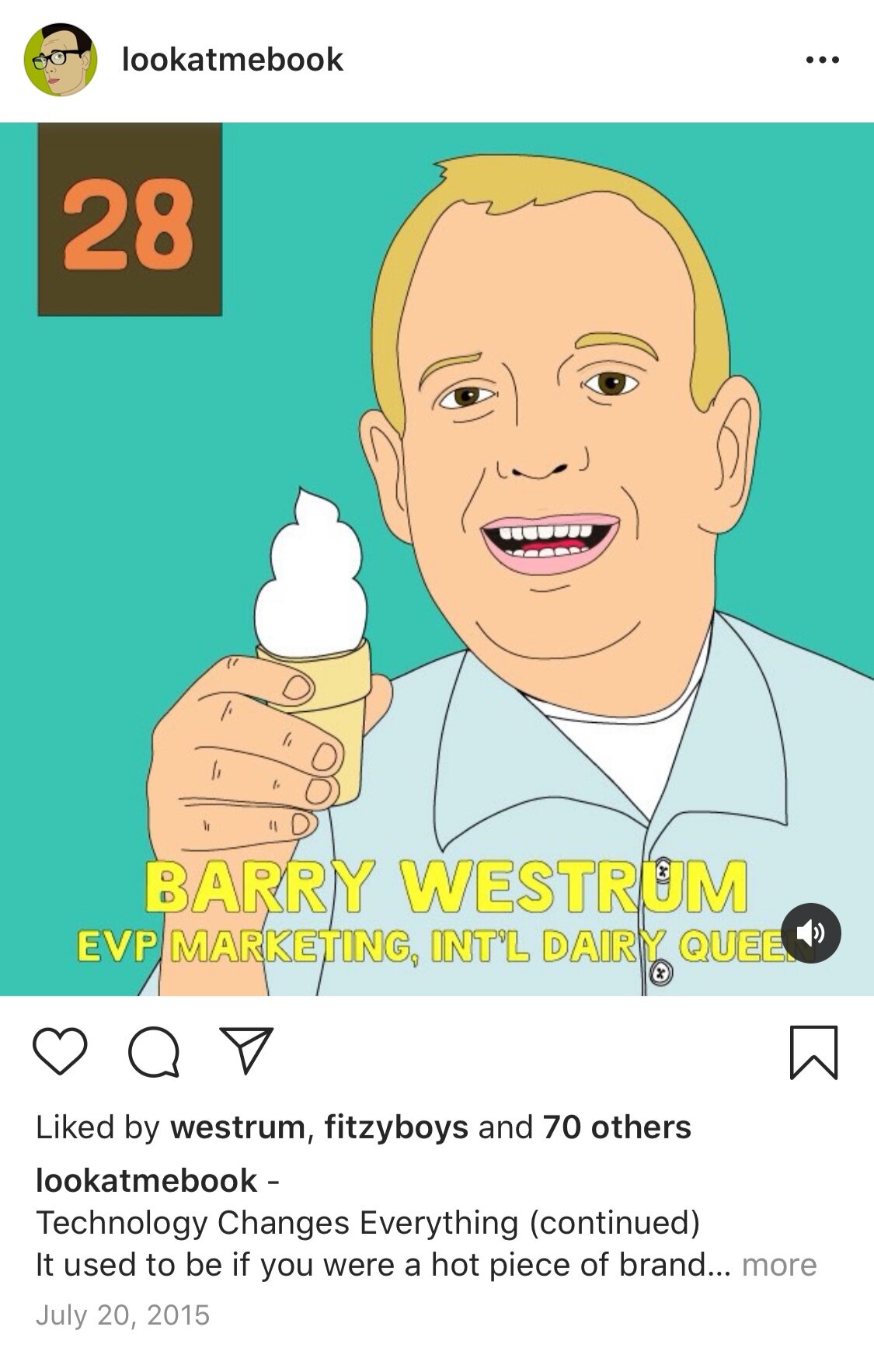Why is it that so many books made for creative professionals aren’t very creative? The two books that I’ve written have made creativity the focal point, both in guidance and in structure. One was published by HarperCollins and released last year. The other released on Instagram, not the most obvious place to launch a book. For me, they’re a great way to share my knowledge with the next wave of talented, creative people out there. And they also give me something to do at night between the hours of 10pm and 1am.
Creative Directions: Mastering the Transition from Talent to Leader (HarperCollins Leadership)
After creative people spend much of their adult lives working as writers, designers, art directors, editors, directors, programmers, they undergo a radical transformation - they go from maker to manager. Suddenly, and sometimes unexpectedly, and with little transition time and even less training, they pivot from practicing their craft to managing teams, overseeing production, interfacing with clients, planning budgets, scheduling, hiring, conducting reviews, pitching business, leading a company, and approving other peoples’ great ideas. I’m honestly tired just reading that list.
While there are plenty of books about leadership and management out there, none of them are targeted towards creative people, traditionally internally focused types who are used to keeping their own schedules, who are wholly unfamiliar with delegation and budgets, who specialize at synthesizing the irrational…and who don’t always do the responsibility thing very well. Creative Directions: Mastering the Transition from Talent to Leader is a compilation of advice, as well as a collection of original, never-before-published interviews on creative leadership organized by the big questions that new leaders have. How do you ration your time and energy between your team and your own projects? How do you keep your employees happy and productive? What's the right balance between prioritizing your vision and what the client wants? How do you deal with imposter syndrome in a room full of MBAs?
I brought in uber-talented and heavyweight creative leaders from a variety of fields to expound on the thinking -- celebrated directors Ava DuVernay and Joe Russo; executive producers behind hit shows like The Simpsons, GLOW, and Rick and Morty; and creative directors and leaders from companies as successful and wide-ranging as Apple, Facebook, Beats by Dre, Disney, AirBnB, Amazon, Google, TikTok, Vans, Vanity Fair magazine, Wieden and Kennedy, 72 and Sunny and more.
Below is a synopsis of the book’s chapters.
SECTION 1 – THE MANAGING PEOPLE PART
It used to be that the only thing you were in charge of were ideas, and the biggest problems you faced were coming up with new good ones. But now you’re in charge of people, and people… are vastly more complicated. They require oversight, direction, feedback, and support. They have varying degrees of ambition and talent. And no one is quite the same.
Your role and relationships have evolved, and are more complex than ever before. As Jeni Brixton Bauer, Founder and Creative Director of Jeni’s Splendid Ice Creams, puts it, “Those people you were in the trenches with now look to you for direction, and so your attitude has to change.” But it’s not always easy for everyone to transition to the new role. Says Emily McDowell, Founder and Creative Director at Emily McDowell & Friends, “I really didn’t know what I was doing. I was a boss and creating this hierarchy, but still wanted to be everyone’s friend. I was trying to get my MBA from searching Google every night.” Adds Marc Weinstock, President of Worldwide Marketing and Distribution at Paramount Pictures, “You don’t just go to lunch with the staff anymore. Now it’s considered a lunchtime work meeting, and they expect you to pick up the tab. You miss the old times.”
So how do you balance getting what you need while giving your employees what they need to be happy, fulfilled, and successful? How does “manager you” relate to the people making things — some of whom might very well have been friends of yours from your years in the trenches? And how do you maintain a supportive yet creative work environment where people are willing to bring the kind of brave breakthrough ideas that get attention and acclaim?
SECTION 2 – THE BEING A LEADER PART
Welcome to the front lines. You’re playing an important and influential role on your team. Clients, supervisors, and those working below you are going to be reliant on your consistent wisdom, insight, and encouragement. “When it comes to leadership, you need to have a destination, and you need to be able to convince people to make the journey with you,” says Jon Ikeda, Acura division general manager and former lead designer. And if that wasn’t enough pressure, according to Sam Bergen, Beats by Dr. Dre Chief Creative Officer, “As a leader, the sole responsibility of the outcome sits on you, especially in a creative industry.”
Depending on your level of creative leadership, your decisions could have huge implications on projects, staffing, revenue, and overall job satisfaction for many, many people. You’re an important conduit between the work and the world, between your team and other teams, and between people’s goals and achievements. You’re also a focal point of people’s attention, and according to Susan Credle, Global CCO at FCB Global, “The more power you have, the louder the megaphone you have. When you’re at the bottom and you raise an eyebrow, no one really notices. But when you’re at the top of a company and you raise an eyebrow, it makes headlines in the hallways.”
How do you adjust to the increased visibility and influence? How do you galvanize troops, build consensus, and bring out the best in people? How do you balance your passions for great work with the need for strong, trusting relationships among the people who work for you? And how do you stay as happy as you were prior to the move?
SECTION 3 – THE MANAGING CLIENTS & HIGHER UPS PART
Thanks to your creative success, you’ve now established some valuable but tenuous relationships with people higher up in organizations, both within yours and potentially within your clients’. They’re counting on you not just for great work, but for steady, trustworthy leadership.
Thankfully, your new vantage point allows you to see more, hear more, and, ultimately, to do more. That means figuring out how to manage the many, sometimes incongruous layers with varying motivations, and learning the subtle art of relationship building. Says Bill Westbrook, former president and executive creative director at Fallon Worldwide and CEO of No Fences Consulting, “There will always be difficult clients. Your best strategy is to do everything you can to earn their trust.” How do you manage and maintain these relationships while managing and maintaining your own goals as a creative person? And what are the factors you should take into consideration when pitching, pushing, and pulling people out of their comfort zones?
SECTION 4 - THE WORK PART
Things just got super complicated. Instead of birthing great ideas, you’ve become a doula, encouraging new parents to push harder and take deep breaths. For some it’s sweet relief from the pressure, continual disappointment, and weekend-swallowing slog, but for many, this absence of creative fulfillment leaves them with cavernous voids and feelings of insecurity.
While we may have pushed hard for our favorite ideas in the past and allowed our creative zeal to guide our decision making, our new leadership positions come with greater responsibility and accountability. How and why we push for things needs to be carefully considered. As Rachel Shukert, executive producer of The Babysitters Club and co-producer of GLOW puts it, “Some people don’t know how to get the best out of other people, and only know being the savior and doing it themselves.”
We need to look at the broader impact of our work and take a more holistic approach to selling it. This section offers several strategies for how to approach the work in our leadership roles in ways that lead to lasting relationships, job satisfaction, and overall success. What are the risks of pushing too hard or not pushing hard enough? What are the consequences of failure?
SECTION 5 – THE CAREER PART
We’d all love long, satisfying, storied careers in our chosen fields, the kind they honor at gala events where old cronies share embarrassing stories from the glory days and the next generation of creative stars shower you with praise and talk about how your work has had such a huge influence on their own. Yep, that sure would be nice.
Alas, nothing is guaranteed. Technological changes and shifting media have brought on a state of continual flux, and as a result, the need for constant adaptation. On top of that, the merciless pace and competitive environments of many creative industries often force people out prematurely. And the more senior and well-paid we are, the more vulnerable we become when there’s a downturn, economic uncertainty, or budget cuts. Point being, long careers can easily be cut short.
So how can we make ourselves relevant for years to come in this ever-evolving world? How do we protect ourselves from being let go at any stage of our career? How do we approach the search for our next great job? And how do we keep our sanity amid all the daily madness?
Below is some of the book’s advice, naturally brought to life in creative ways.
Look At Me When I’m Talking to You: Building Brand Attraction in an Age of Brand Aversion
My first book details the modern day marketing landscape, where jaded consumers have seized control of the messaging, and brands are in desperate need of new, creative ways to breakthrough and connect. To demonstrate the book's philosophies and practice what I was preaching, I released the book in a completely unique and attention-getting way -- on Instagram (@lookatmebook), a page a day, for 176 days. It was the first book ever to be released on the platform, and had over 10k followers, several notable write-ups and resulted in a speaking tour around the country. It even became required reading in college classrooms, including the University of Southern California and Loyola Marymount University.
Overview video
I chopped the book up into bite sized pieces and each day for 176 straight days I would post a new portion, which was anchored by an attention-getting animation.
“How can we tell people what makes our car, jeans or cat food different from our competitors’ if consumers aren’t looking at the content we create? How can a smaller player build a bigger brand identity if there’s no audience to play to? How do we build emotional relationships between brand and consumer when there’s a shrinking marquee and diminished interest, and the only way to break into people’s lives seems to be Trojan horses that conceal the fact that we’re marketing to people?
The sad fact is that consumers no longer want to hear from marketers. They used to put up with us, like that creepy uncle who always talks about Area 51 at family gatherings but seems harmless enough. Today, audiences have taken control of the media channels, have become incredibly averse to the persuasion model and are highly adept at keeping brands at bay. Even worse, they know how to make them disappear. Their anti-marketing fences are tall and fortified and strewn with the bodies of brands that try and fail to reach consumers every day. They don’t care if we’re faster, cheaper, 10% meatier, luxury-like, guaranteed to last longer or will reduce the severity of the common cold (even if they have a cold).”
I also shared several rules for connecting with new consumers. Since the animations were the point of entry, I kept them entertaining.
“Brands used to be able to dress themselves up any way they wanted when they hung out with consumers. A car company could put on a responsible, smart-looking suit and talk about how safe they are. A restaurant could adopt and cool, contemporary persona and claim to be the hottest spot in town. But today, every brand comes to the table naked. They can no longer manipulate the masses with whatever messaging they feel like putting out there. Consumers know too much and have too much information at their fingertips. They can fact-check on Google in a matter of seconds, they can look up consumer and editor reviews, and can consult their own social networks for the God’s honest truth. They know what’s window-dressing—and what’s factual. Which is something brands need to respect.”
I brought in industry heavyweights to elaborate on topics. Not just because they had really smart things to say, but because I needed to expand my marketing reach.
I also took the book’s teachings and developed a free, six-part educational series called The Look At Me Academy. Each class drew 100+ people.
Given that I’m in marketing, I did a lot of promotion for the book. And given that the book was quirky, so was all the marketing.
I promised I’d sing a song for every share on social media. Which meant I had to sing over 200 requested songs (my sincerest apologies).








